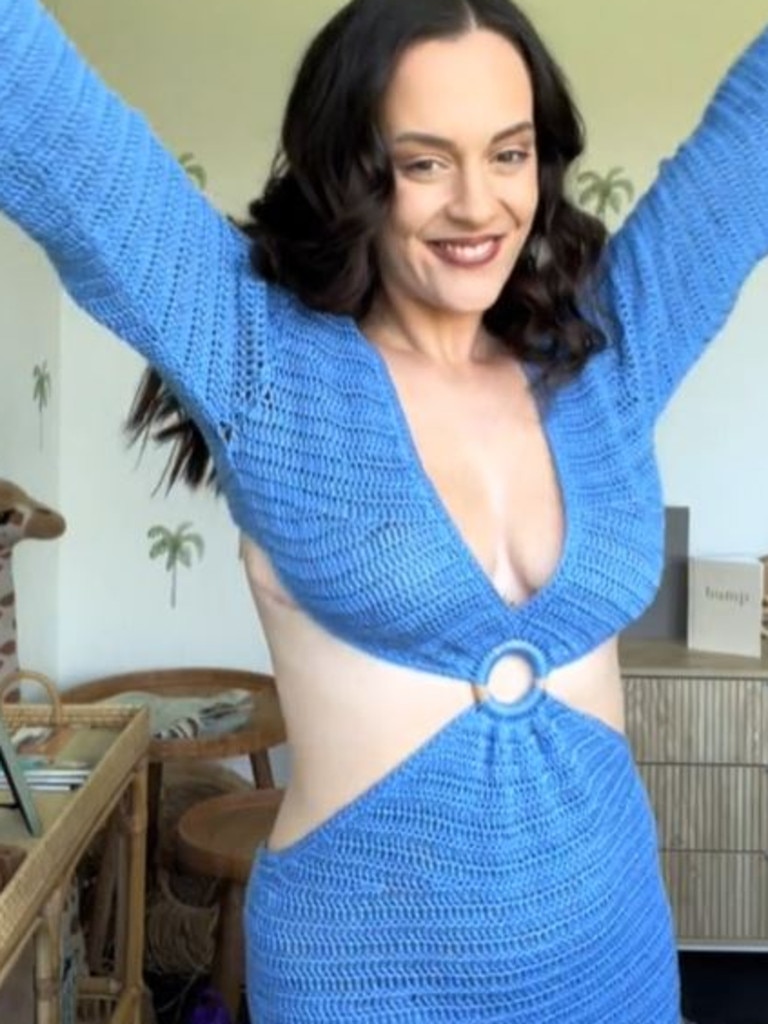Young women are sharing their breast reduction stories online
There’s an empowering new trend going viral on TikTok where women are sharing their personal journeys with their breasts.

There’s a new and empowering movement happening on TikTok where women are sharing their breast reduction stories.
TikTok has cemented itself as a space for women to talk about their bodies rather than post body photos, and it has opened up nuanced conversations about the reality of having big boobs.
In Australia, Medicare rebates claimed for breast reduction surgeries have surged by more than 200 per cent in the last three years.


The social media trend around breast reduction stories is for women to show themselves wearing an outfit before surgery and then after surgery.
Obviously, their chests look noticeably smaller after they’ve had surgery, but the big difference you’ll notice is how much happier and more confident they appear.
Creator Megan Lynn explained she decided to get a breast reduction because she was experiencing back pain and was feeling “self-conscious” in certain clothes.
Ultimately her boobs were taking such a toll on her and she was feeling “weighed down” by them.
The TikTok video follows her before her surgery, showing her in a gorgeous green dress, and the it ends with her in the same dress post-reduction surgery.
She explains that the surgery has given her “new-found confidence.”


Similarly, creator Maddie went viral and amassed more than seven million views when she created a TikTok to reveal how different she looked in a fitted, white singlet top after her breast reduction surgery.
“It completely changed my life, back pain, and confidence,” she explained.
The comments sections are filled with women either offering compliments, sharing their own breast reduction stories or explaining they are also considering a reduction.
“Well this was my sign to get an appointment. I’ve heard it’s a painful recovery,” one commented.
“I want to do it but I’m scared. I heard recovery is rough,” another vented.
“I’m scheduled for my reduction in February! I can’t wait,” someone revealed.


Sadly, there’s also been a trend of women having to answer how their partners feel about reducing their breast size.
Creator April has been sharing her breast reduction experience on TikTok and it has been positive for her.
She said it has made her feel “younger” and more “confident” and helped end the severe back pain she was experiencing.
She’s still had to deal with trolls.
“Why reduce? Poor man,” someone wrote.
In response, April shared the supportive messages her partner had sent her after she’d undergone the procedure.


Beyond the before/after shots are women sharing content on how much their lives have improved.
One creator shared that no one was happier at the beach than a woman who’d just had “90 per cent of her boobs just cut off.”
The TikTok just featured her having fun in the water, and she explained that it was the first time in her life she’d gone to the beach and been able to enjoy it.
“First time I’ve ever gone to the beach without worrying about how I looked,” she shared.
Creator Nico now routinely posts content recommending different swimsuits for post-surgery women to try.

Breast surgeon, Associated Professor Sanjay Warrier has noticed a rise in women requesting breast reductions.
“What we have seen in our practice is ultimately patients seeking surgery with one of two main expectations – the patient seeking reduction for functional reasons (typically due to large breasts), or the patient looking for a more youthful look,” he said.
Dr Warrier said often women request breast reductions because they’ve been in pain for years.
“Many patients with large breasts that seek breast reduction surgery report that they have suffered for years with back and shoulder pain,” he said.
Dr Warrier explained that larger breasts can create real strain on some women’s bodies.
“The main one is the weight of the breast and resultant strain on the body, in particular the shoulders and back,” he said.
“With time, the strain on the back can also impact the spine as well. Hence the increasing desire for patients, over time, to consider having surgery for functional reasons.”






